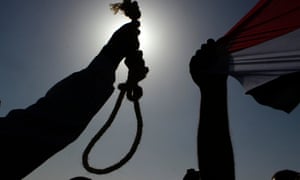History may be susceptible to few inexorable predictions. But we are on safe ground if we say that sacrificing a human being to the false god of deterrence, or for pure revenge, is not going to look civilised when we peer back from the 22nd century, any more than our own history books laud the Salem witch trials three centuries ago.
At one time or another, essentially every country has used capital punishment. Yet today, of the 195 states recognised by the United Nations, only 37 killer countries remain: just one in five. Of the rest, 102 have formally abolished, and 56 have either not executed for more than 10 years, or have imposed a formal moratorium. The death penalty is in its death throes.
However, just as a wild animal may be most dangerous when cornered, so the renegade states lash out. Pakistan is an example of this. Nine months ago, the moratorium imposed by the Pakistan People’s Party (PPP) six years earlier held firm. In 1979, the then PPP leader, Zulfiqar Ali Bhutto, was hanged by the military regime; in other words, they had experienced the caprice of capital punishment first-hand.
However, the current PMLN government, led by Nawaz Sharif, has vowed to execute everyone on death row – which, at 8261 people, is more than in any other country. This is meant to deter the terrorists who had carried out the hideous Peshawar school massacre in December 2014. (All the “jihadis” had willingly died in the attack, so the deterrent value of executions seemed questionable even then.)
Yet Pakistan is an example of a country where deterrence works – for politicians at least. For months, the PMLN government had been discouraged from carrying out executions, by an EU threat to take away favourable trading status, which is said to be worth some $1.3bn dollars a year. They have also been deterred by the terrorists themselves. While those who were said to be extremists made up at least 13 of the 25 hanged in the first seven weeks of the gallows, on 11 February this year the terrorists apparently issued their own secretive threat of retribution: if any more of their number should be hanged, they would target the politicians and their families personally.
Naturally, the politicians did not admit anything publicly, but they stopped executions for a month. The 189 executions since 13 March have included not a single member of these proscribed groups. In other words, the pretext for execution is simply false, and yet Pakistan is executing a flood of those with nothing to do with terrorism – from schizophrenics, paraplegics and juveniles, many of whom seem to be innocent.
Iran is another country where a recent bloodbath on the gallows may be subject to western influence. Iran has recently doubled the rate at which it hangs people for narcotics violations and these are, overwhelmingly, small-time mules. Iinvestigations by Reprieve show that UK support for Iranian drug police directly enabled 2,917 hangings, and a western-funded UN drugs programme has helped to put the necks of more than two drug mules in the noose each day this year.
Another pretext for using the death chamber is common to conservative Christians and Muslims alike – that the death penalty is somehow mandated by God. Their take on the lex talionis (“an eye for an eye”) is itself dubious, as such countries impose death for many crimes, including drugs and blasphemy. In Saudi Arabia the new ruler, King Salman, has more than doubled the number of prisoners beheaded this year, and more than half have been foreigners who generally do not speak Arabic and have little chance of defending themselves.
The United States still has more than 3,000 people on death row, but only five states have managed to conduct 19 executions between them this year, down more than two-thirds on 1999, with public support waning. However, the battle is far from over. The US is less susceptible to international pressure, and the conservatives take their shibboleths seriously. Recently, some states have had trouble obtaining lethal injection drugs, for the simple reason that pharmaceutical companies do not want their product used to kill people. In a recent supreme court challenge, the conservative five-justice majority voted to uphold the lethal execution process, insisting that a prisoner who objects to a particularly gruesome and painful method of execution must help the state by suggesting an alternative way to execute him.
China may be the ultimate challenge for abolitionists. Like the US, the regime is not impressed by international pressure. Despite this, Chinese officials have stated that abolition will come sometime in the future, when the time is right. Yet, ironically, they have created the conditions for the internal backlash they fear from the Chinese people: the population remains strongly (95%) in favour of the death penalty for the simple reason that official propaganda says that executions deter crime, and the regime stifles dissent. When the regime allows meaningful discourse, the facts will inevitably create the moment for abolition.
For those of us in the trenches of this battle, it is cold comfort that history will place us on the correct side of the argument. I have watched while six of my clients die: two in the gas chamber, two in the electric chair, and two on the gurney. Each time, I have come out of the chamber, and looked up at the stars, wondering how such barbarism has made the world a safer or more civilised place. For today, there are just too many individual, living human beings systematically killed, all for no good reason.

View all comments >
comments
Sign in or create your Guardian account to join the discussion.
This discussion is closed for comments.
We’re doing some maintenance right now. You can still read comments, but please come back later to add your own.
Commenting has been disabled for this account (why?)